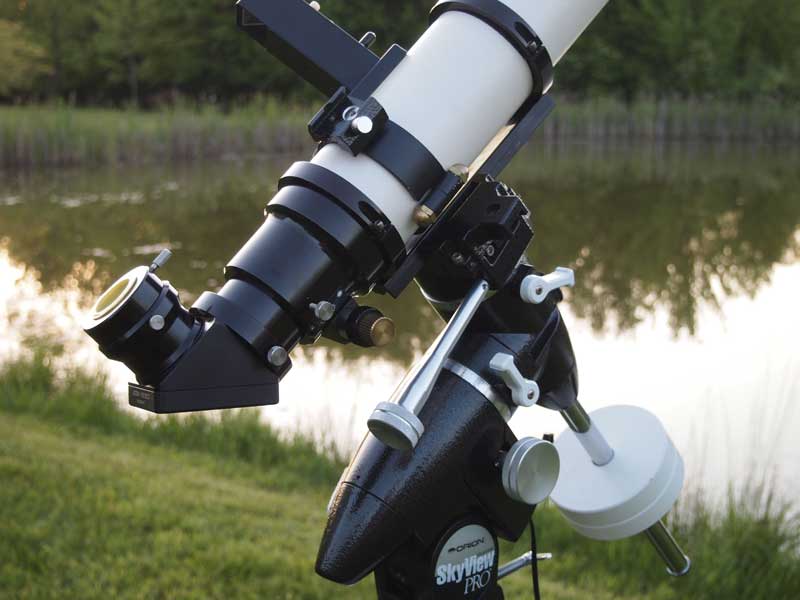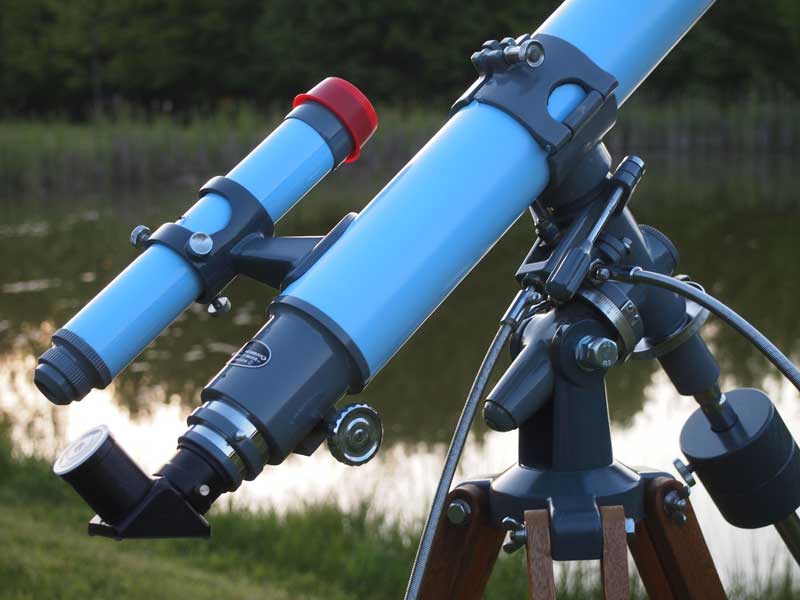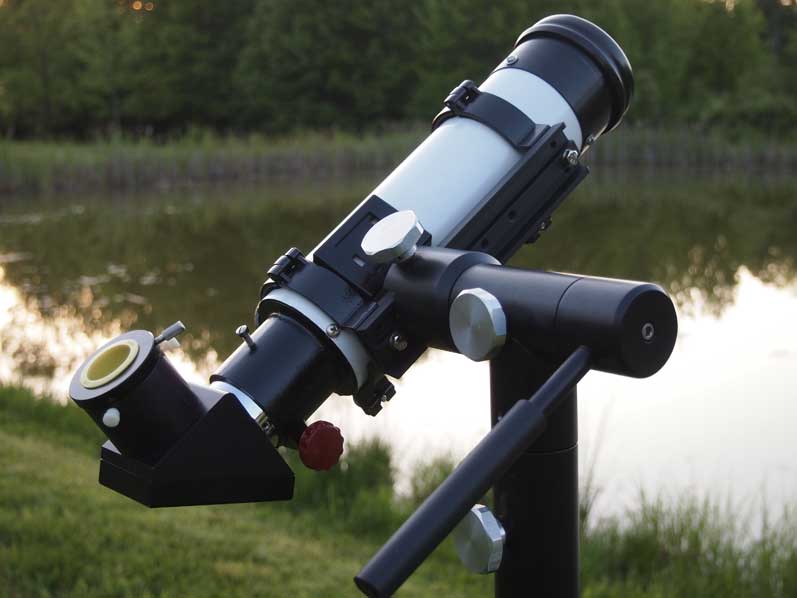
 |
| Left to right: Stowaway,
Eikow, and Jaegers refractors. |
 |
| Stowaway
mounted on Orion SkyView Pro mount with Rigel QuikFinder
on tube. |
 |
| 3" f/13
Eikow refractor, circa 1960. |
 |
| 3" f/6.5
Jaegers refractor on Desert Sky Astro mount. |
 |
 |
 |
 |
 |
 |
 |